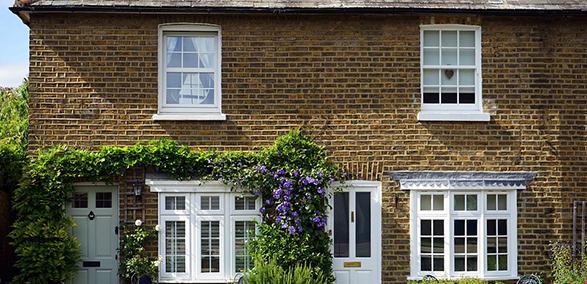How to get it right: working on or around a party wall
It’s now 20 years since the Party Wall etc. Act came into force on 1 July 1997. It applies throughout England and Wales and provides a framework for preventing or resolving disputes in relation to party walls, party structures, boundary walls and excavations near neighbouring buildings.
Anyone intending to carry out work (anywhere in England and Wales) of the kinds described in the Act must give adjoining owners notice of their intentions.
So after 20 years are we now getting party wall works right?
It’s often helpful in understanding the principles of the Act if owners think of themselves as joint owners of the whole of a party wall rather than the sole owner of half or part of it. Some works may be too minor to need a notice under the Act, such as:
- drilling into a party wall to fix plugs and screws for ordinary wall units or shelving
- cutting into a party wall to add or replace recessed electric wiring and sockets
- removing old plaster and replastering
However, the following works all fall under sections 2 and 6 of the Act:
- Repair of a party wall
- Inserting a damp proof course
- Underpinning the whole thickness of a party wall (e.g. to prevent settlement)
- Cutting into a party wall to take the bearing of a beam (e.g. for a loft conversion)
- Raising the height of a party wall (e.g. adding another storey)
- Extending a party wall downwards (e.g. to form a basement)
- Demolishing and rebuilding a party wall (e.g. if it is structurally defective)
- Underpinning the whole thickness of a party wall (e.g. to form a basement)
- Cutting off projections from a party wall (or from an adjoining owner’s boundary or external wall) and if necessary building a new wall adjacent (e.g. removing a chimney breast)
- Building up against or astride across the boundary line with a new building
- Excavating, or excavating for and constructing foundations for a new building or structure, within three metres of any part of a neighbouring owner's building or structure, where any part of that work will go deeper than the neighbour's foundations
- Excavating, or excavating for and constructing foundations for a new building or structure within six metres of any part of a neighbouring owner's building or structure, where any part of that work will meet a line drawn downwards at 45° in the direction of the excavation from the bottom of the neighbour's foundations
Party wall works timeline
A notice of intended works should be served on adjoining owners at least two months before the planned start date for work to an existing party wall or one month for a new party wall. The owner in the adjoining property may agree to allow works to start earlier but is not obliged to, even when agreement on the works is reached.
NB, the notice is only valid for a year, so don’t serve it too long before you want to start.
Adjoining owners can agree with the building owner's proposals or reach agreement with the building owner on changes in the way the works are to be carried out. This can cover things like safety or structural concerns, working times, right of access and replacement of surfaces and finishes.
Party wall disputes
Where a dispute arises in relation to...
- a new party wall
- party fence wall
- where there is no written consent by the adjoining owner within fourteen days to a notice served in relation to an existing structure or an excavation
...the Act provides for the matter to be resolved by a surveyor, or surveyors, in a procedure for the resolution of disputes. This can be both costly and time-consuming so it’s always best to have everything resolved well in advance of commencing work. This will often include talking to neighbours to ensure they understand what work is involved and provide reassurance around anything of concern to agree on a method of work.
To coincide with the 20th anniversary, Pyramus and Thisbe have published the third edition of their guidebook “The Party Wall Act Explained”.
This professional surveyor organisation was set up in 1974 and played a pivotal role in the framing of the present Party Wall etc. Act 1996.
Further information
The DCLG Party Wall Explanatory Booklet
The Party Wall etc Act 1996 Explained - Pyramus and Thisbe Club
Browse our 'How to get it right' articles
Please Note: Every care was taken to ensure the information was correct at the time of publication. Any written guidance provided does not replace the user’s professional judgement. It is the responsibility of the dutyholder or person carrying out the work to ensure compliance with relevant building regulations or applicable technical standards.
Sign up to the building bulletin newsletter
Over 48,000 construction professionals have already signed up for the LABC Building Bulletin.
Join them and receive useful tips, practical technical information and industry news by email once every 6 weeks.
Subscribe to the Building Bulletin




Comments
(No subject)
Submitted 7 years 3 months ago
Webmaster note
Submitted 7 years 3 months ago
Party wall underpinning
Submitted 3 years 10 months ago
LABC response
Submitted 3 years 9 months ago
Thank you for your enquiry. The building regulations state that underpinning is ‘building work’; therefore, an application is required for full or partial underpinning on any building to which the building regulations apply. Please see our article on LABC Front Door: https://labcfrontdoor.co.uk/projects/underpinning/do-i-need-building-regulations-approval-for-underpinning.
Please contact the Building Control team at your Local Authority to discuss any project specific requirements. You can find the contact details of the relevant Building Control team by entering your postcode in the search box at the top right-hand side of our website.
Thanks,
LABC team
Party wall recladding
Submitted 3 years 2 months ago
Thank you
LABC response
Submitted 3 years 2 months ago
Thank you for your commwnt, regarding the cladding of the party wall, following removal of your side of the building.
We recommend that you discuss your proposal with your local council as the demolition work might require planning permission and building control will need to be made aware by way of a section 80 notice under the Building Act 1984.
We are also of the view that the application of overcladding might be considered as building work, which would require notification under the building regulations.
Best,
LABC team
Add new comment